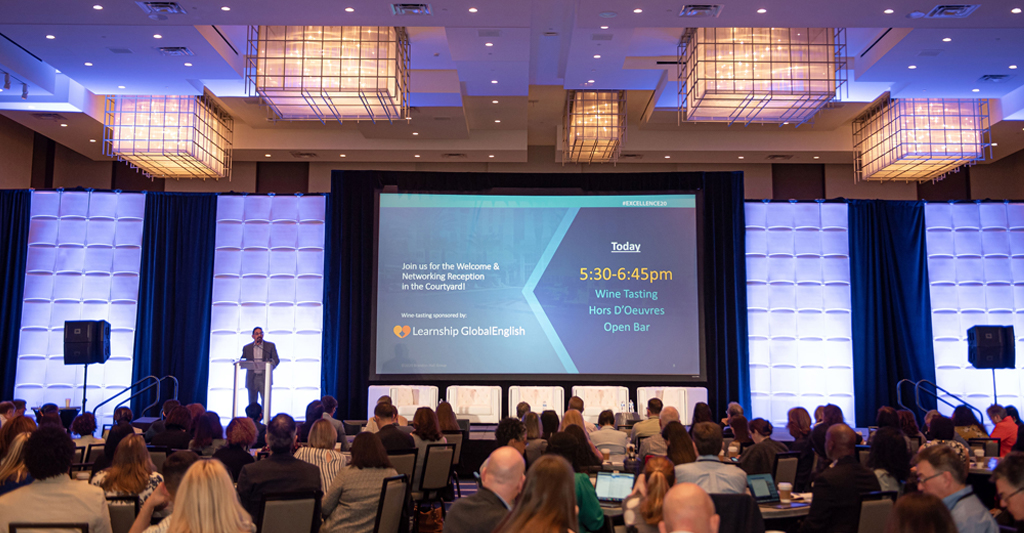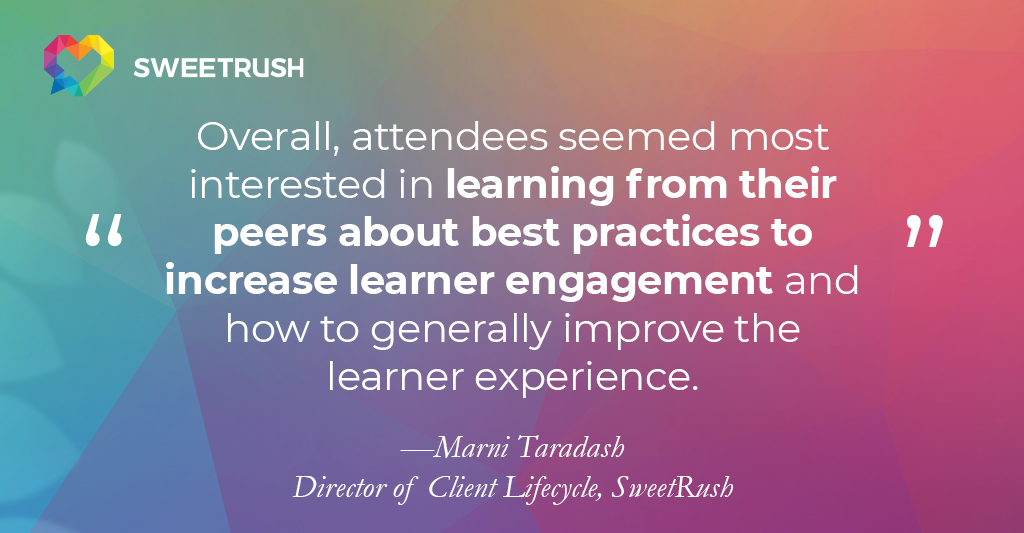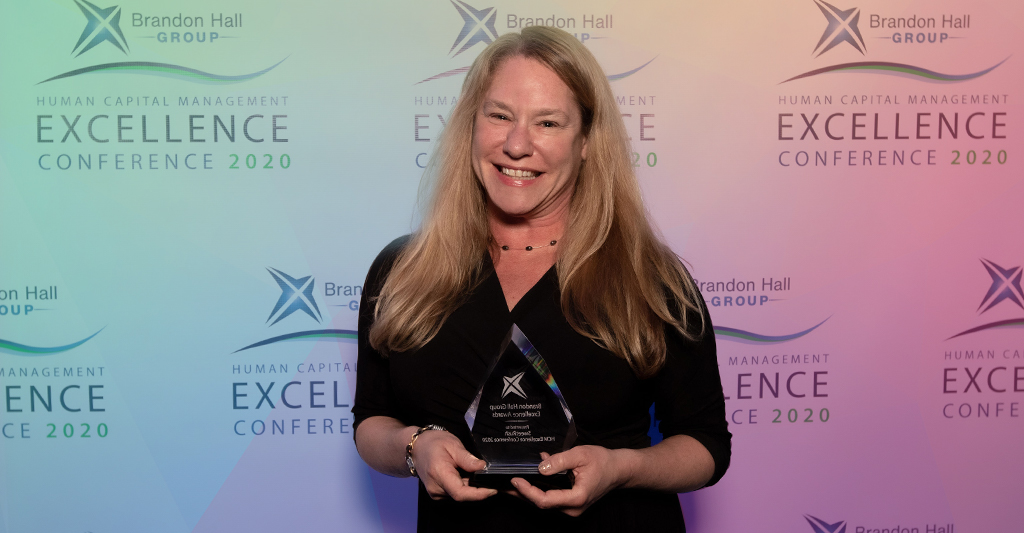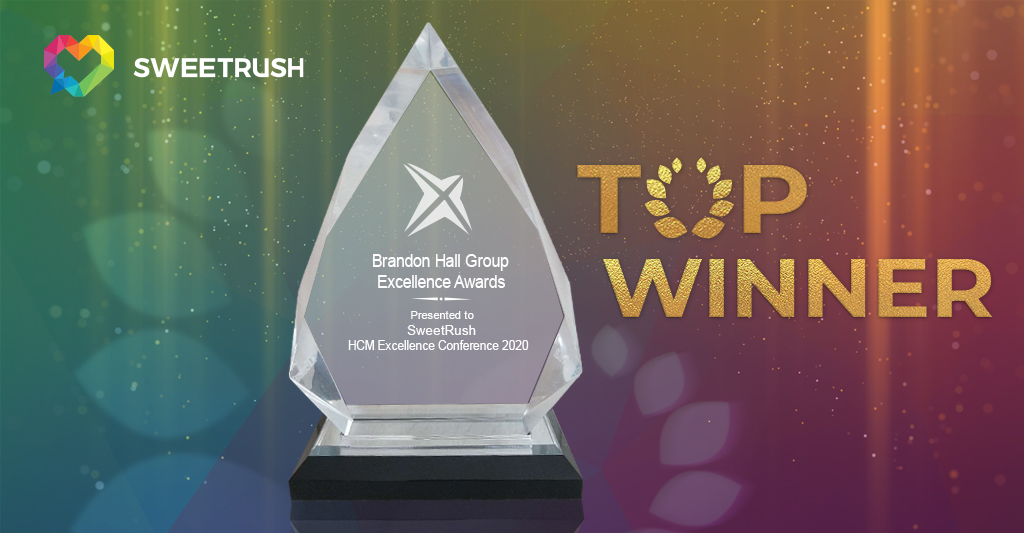A big thank you to everyone we met at this year’s Brandon Hall Excellence Conference in West Palm Beach, Florida. The true highlight of the event was the opportunity for facetime with our clients, and to listen and learn from the best in the learning community. Being a virtual company, it’s not every day that we get to connect with so many members of our community, all devoted to learning and development. But that’s exactly what our Director of Client Lifecycle, Marni Taradash, got to experience.
Marni brought back a ton of insights and personal thoughts, so we asked her to share her experience with our community. If you weren’t able to attend, we hope this article sheds some light on what the conference was like.
The Brandon Hall Excellence Conference Builds Community
Q: The theme was “The Future of the Employee Experience.” What was your initial impression of the conference and the attendees?
Marni: It was amazing to be part of such a thriving community of L&D experts. It was really a cauldron of passion for all things L&D. People were genuinely curious about what each of us was doing, and how we were contributing to the success of L&D teams, their organizations, and their employee learners. I could truly see how SweetRush fits into the landscape as a learning services provider, along with the many other services that support companies with their L&D development needs. Not to mention an organization’s own internal resources. This conference brought them all together so we could see how the puzzle pieces fit.

The Brandon Hall Excellence Conference 2020
Q: What do you think were some of the benefits of attending?
Marni: I’d say attendees got to see a lot of interesting and innovative work being demonstrated on the technology front. But the real value was getting to mingle with the industry to get a feel for what everyone was doing. As a vendor, we’re lucky that we see the evolving trends in L&D from our clients’ needs every day. However, some organizations don’t get the opportunity to hear about the trends or topics from the greater L&D community. So this conference provided a lot of value to them.
Q: What was of top importance to attendees?
Marni: Overall, attendees seemed most interested in learning from their peers about best practices to increase learner engagement and how to generally improve the learner experience. People are talking about cultural transformation, diversity and inclusion, and design thinking. Much discussion was around onboarding, competencies, and transforming leadership; how cultural transformation is a pillar of business success; how to inspire better workplace experiences.

There was a lot of talk surrounding durable skills: those soft skills that are essential for effective leadership. Skills that are long-lasting, versus skills that have a shelf life. For example, resilience, emotional intelligence, adaptability, and managing tough conversations; or establishing leadership best practices. As a whole generation retires over the coming decade, how will an organization pass down the durable skills that are being lost? In the first 10 years of their career, new employees need those durable skills, knowledge transfer and mentorship, but resources are getting scarce.
Q: Do people feel that there is a lot of pressure on L&D to help maintain the continuity of skills within their organizations?
Marni: They do. This concern is causing companies to shift from examining only what a learner needs to do their work, to companies gaining a deeper understanding about the whole learner experience. They’re asking: “How is the training going to give them the mindset to be the most effective in their jobs?” Companies are gaining a better understanding about the importance of having a better workplace environment, and how L&D can work toward this goal. Many sessions revolved around providing an exceptional, human-centered, custom learning experience. The ultimate goal being to pass knowledge, produce a workforce with durable skills, and reduce risk for the organization.
Creating Learner-Centric Programs Through Learner Input
Q: What were some of the questions you had for attendees?
Marni: I was interested in learning more about the best practices around being in touch with the learner and what it means to different companies that the best L&D “starts with the learner.” Was this during the requirements phase or an alpha review? I wanted to know how frequently companies piloted programs, to gain learner insight and feedback before the SCORM is wrapped up. I, personally—and I know SweetRush does as well—firmly believe in the value of getting learners involved during the requirements gathering. This means getting learner input, not just feedback.
Q: Anything else?
Marni: Just that it was great to talk with some of our client-partners up close. I got to hear firsthand about the impact that SweetRush has had on them as people, as L&D professionals and their learners.
This kind of feedback really validates our style and methodology, and shows the value of our culture—our partnership mindset. It made me pretty proud of our team. I can’t wait until next year!

Marni accepting SweetRush’s trophy in recognition of our 28 award wins.




